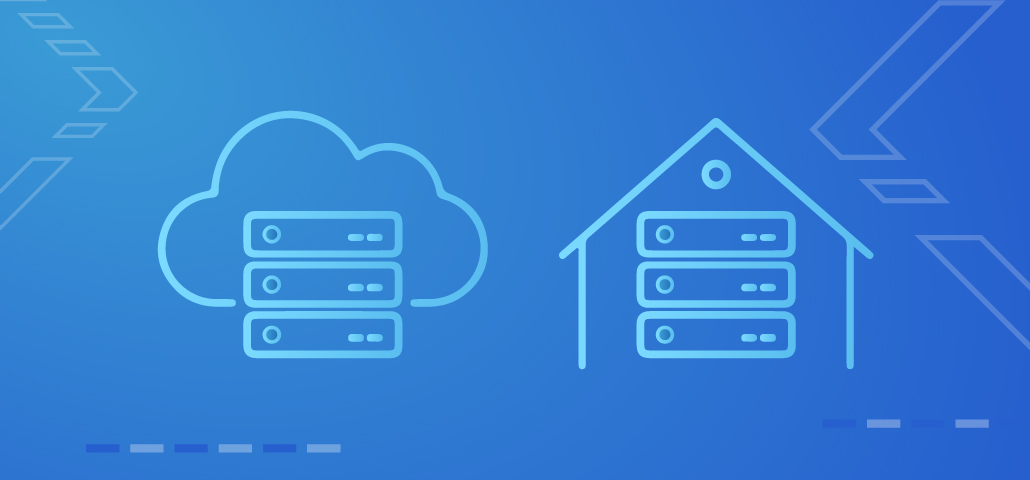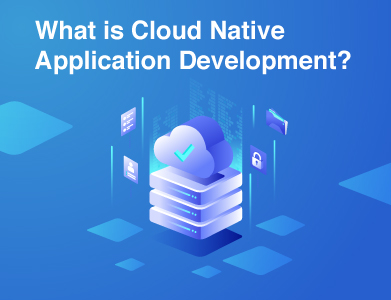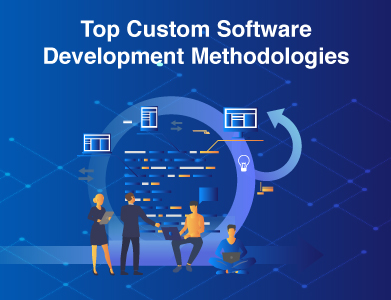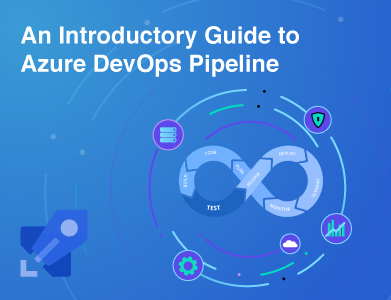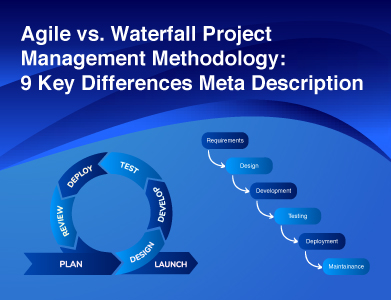Did you know? Around 94% of companies globally use cloud software today. That's a 14% increase since 2020.
Despite this growth, many companies still find it challenging to choose and implement Cloud-Native Services. The cloud offers the advantage of running software and storing data on remote servers that are accessible online.
On the other hand, an on-premise setup involves running software on local servers within company premises. The choice between cloud and on-premise depends entirely on your business needs. This blog provides a detailed comparison between cloud and on-premise to make your decision-making process easier.
Let's dive in.
What is meant by on-premise?
The traditional method of maintaining IT infrastructure is on-premise. This means you will need to install any software on your company's hardware located at your business's physical premises. Your in-house IT department can use this model to manage and configure data based on your business needs, giving you greater control over your server and data security.
Advantages of On-premise Setup
- Super secure
An on-premise setup is more secure because there is less chance of leaking valuable data to third parties. Many businesses consider it more secure because the data stays inside the organization.
- Complete Control
When you do not use remote servers, your developers can make upgrades or changes faster. Storing the data on hardware within the company's premises results in fewer obstacles, including a lack of internet connection or third-party problems.
Introduction to Cloud
In cloud native development, people can access software and services over the internet, not on local computers. Under the cloud model, you can rent out storage, servers, databases, and software from another organization “as a service.” You can choose from 3 models in cloud native development services: public, private, or hybrid. Public clouds are third-party-owned, offering resources through the internet. Private clouds, like on-premise, are only for one organization, providing more data control and security. Hybrid models combine the good of both for flexible and secure solutions.
Why is Cloud a good option?
- Cost Control: Cloud native application development eliminates the need for upfront investments in data centers or expensive hardware maintenance. Plus, your business doesn’t require you to incur the cost of maintaining them.
- Scale As You Grow: With the cloud, you can scale up your infrastructure during increased workload without hampering the existing performance. You can use as much processing power or storage as you need and then decrease it based on the business situation.
- Ability to Adapt Faster: In cloud-native service setups, you can test and deploy new technologies within hours. Cloud providers offer free trials and pay-as-you-go options, which allow you to test updates quickly without financial limitations.
So, this was an overview of on-premise and cloud. Now, let's take a closer look at On Premise Software vs Cloud Software.
On premises vs Cloud: The Key Differences
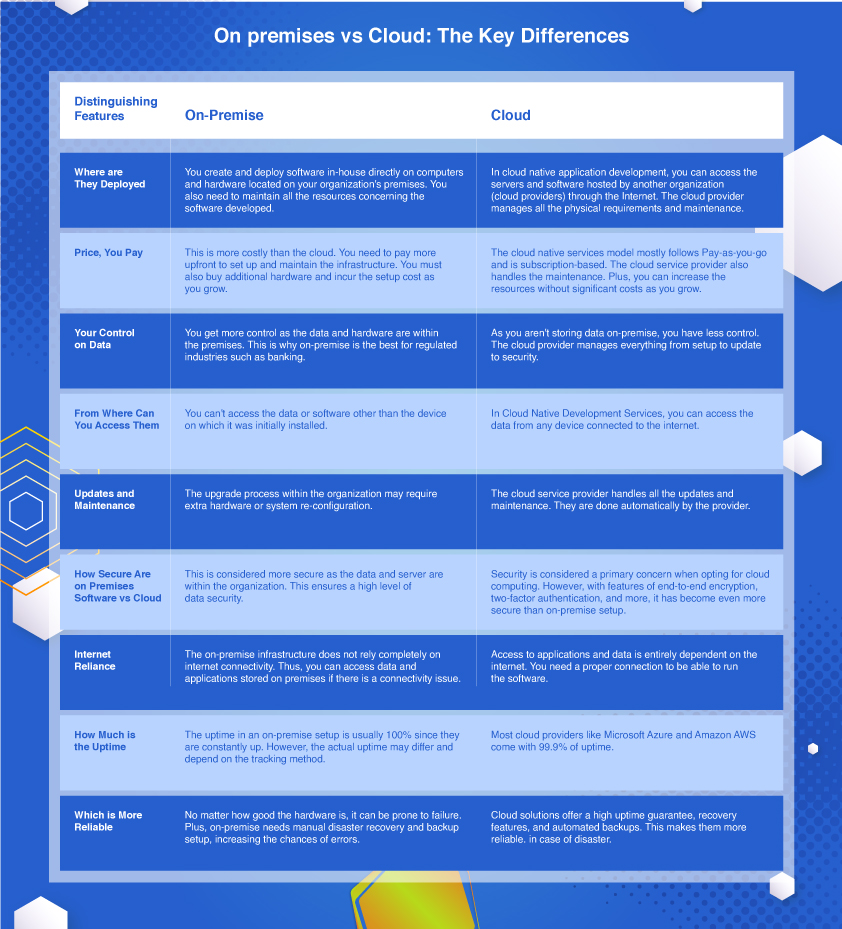
These were the top cloud vs. on-premise pros and cons. Looking at the current business scenarios, Cloud-Native Application Development may seem like a better choice.
This is because it comes with lower cost, less uptime, and better reliability. However, to have complete control over your data, opt for an on-premise setup. A few more pointers to consider before deciding to continue on the cloud or stay on-premise.
On Premises Software vs Cloud: Which Option Is Better for Your Business?
When to Go for Cloud
- Opt for cloud solutions to avoid significant upfront investments in hardware, software, and infrastructure.
- Cloud computing provides the necessary flexibility for employees to access applications or data from anywhere.
- If you require quick deployment of applications and services,
- To avoid overprovisioning and ensure efficient use of resources
- For businesses focusing on innovation, the cloud allows for rapid testing, development, and deployment of new applications without hardware limitations.
However, the training cost can be higher if your company lacks an IT team with sufficient skill. In this case, you can opt for cloud-native service development.
[H3] When to go for on-premise
The advantage of Cloud Native Services can sometimes sound so attractive that you feel the need to shift. However, on-premise may be a better decision for your company.
Go for an on-premise setup if
- Your business has the resources to make the upfront investment and can maintain the same,
- You have a large-scale IT environment and desire greater flexibility in making changes.
- You don’t want a third party to have access to your data
You can also merge the advantages of these two configurations using a Hybrid cloud arrangement. In a hybrid setup, you can take advantage of cloud computing flexibility. However, you can also have control over a few on-premise systems for security measures or specific needs.
The Final Decision Is Up to You
Choosing between on-site and cloud-based solutions can be a tough call. As more companies transition to a cloud infrastructure, it might appear as a compelling option, and indeed it is. Nonetheless, always weigh the advantages and disadvantages of both arrangements for your business. Bear in mind nobody can make a better decision for your business than yourself. If you are thinking of going for cloud setup and looking for a cloud-native application development, we can help. Our experienced team makes the transition super smooth and hassle-free for you. Get in touch with us today if you need more information to make the shift or want to understand how we can help.
Connect With Our Cloud Computing Expert Today!
01What is an example of on-premise?
Examples of on-premise include company-owned servers and data centers, workstations, on-site software applications like CRM systems, and local file storage and backup systems.
02What's the difference between on-premise and cloud?
You can manage on-premise solutions on the company's own servers and physical premises. This gives full control and ownership over the hardware and software. Whereas a third-party provider hosts and manages cloud solutions over the internet. Thus, it offers higher flexibility and lower upfront costs.
03Which is safer, on-premise or cloud?
On-premise provides more direct control over security and compliance. Cloud providers offer robust security measures with less direct control for the company. The safety of either depends on how well security is implemented and managed.
04What is AWS on-premises vs cloud?
AWS on-premises lets customers run computing and storage on their premises. Thus, customers get the same functionality as the AWS cloud, which offers a hybrid experience. In the AWS cloud, customers manage resources entirely in the cloud environment.
05Is Azure better than on-premise?
The choice between Azure and on-premise depends on the organization's specific needs. Azure offers scalability, flexibility, and reduced upfront costs, while on-premise solutions provide more direct control and customization. Many organizations adopt a hybrid approach to leverage the strengths of both.
